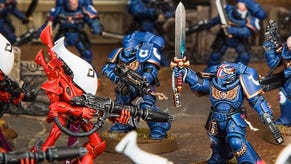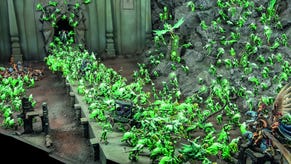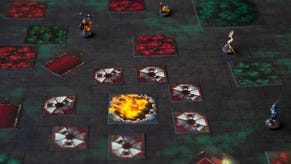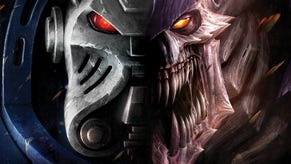Where to start with Warhammer 40,000 10E: What you’ll need and what to buy first
From miniatures to terrain, here’s everything you’ll need to start playing 40k.
The popularity of Games Workshop’s Warhammer 40,000 and wealth of licensed books, video games and merchandise makes it a common first game for folks dipping a toe into miniatures games. It is to wargaming as Dungeons & Dragons is to RPGs - and, like D&D, figuring out where to start with Warhammer 40k and what to buy first can be tricky.
The nature of large-scale wargames like Warhammer 40k means that collecting an army is a large investment of both money and time. Fortunately, some changes and new features introduced in the recent 10th Edition of the game make it a lot more approachable for beginners wondering where to start with Warhammer 40,000.
Where to start with Warhammer 40k
- What are the three ways to play Warhammer 40k?
- What Warhammer 40k books do I need to start?
- How many miniatures do I need to play Warhammer 40k?
- Do I need a board to play Warhammer 40k?
- Do I need terrain to play Warhammer 40k?
- How much space do I need to play Warhammer 40k?
- What else do I need to play Warhammer 40k?
- What starter sets are available for Warhammer 40k?
What are the three ways to play Warhammer 40k?
Before you start, you need to decide how you want to play 40k. There are three different ways to play Warhammer 40k. While they all use the same miniatures and rules, which one you want to play is going to dictate exactly what you need to get started. If you’ve played trading card games like Magic: The Gathering, you’ll be familiar with the concept of different formats and 40k is very similar.
Chapter Approved
Chapter Approved is Warhammer 40k’s matched play format, designed to give you a balanced game against any opponent. It’s the go-to format for tournaments and other competitive events, but the straightforward nature makes it perfect for casual games too.
You construct an army with an agreed points limit, with each unit costing a set number of points. The standard-sized game has a 2,000-point limit and is expected to take about three hours to play, but is likely to be longer if you’re new to the game or the army you’re playing, or just prefer a more relaxed pace.
Crusade
For those looking for more story in their 40k, Crusade is a more narratively-focused format, allowing you to tell the story of your chosen army as they grow and develop over many games. You create a Crusade roster of all your units, naming your characters and coming up with some starting point for the story of your army.
The roster starts out with a limit of 1,000 points, with units costing a set amount. You select your force for a game from this roster, to a points total agreed with your opponent. As you play more games, the size of your roster increases, allowing you to add more units as your collection expands.
Combat Patrol
Ideal for those looking to get into the hobby as quickly as possible, Combat Patrol is the newest way to play Warhammer 40k and uses smaller, fixed forces. Instead of creating your own forces, you simply choose one of the Combat Patrol boxes produced by GW, build your minis and get stuck in.

What Warhammer 40k books do I need to start?
If you’re playing Combat Patrol, you don’t need any books at all. Everything you need is freely available from the Warhammer Community website or the 40k app.
For Chapter Approved or Crusade, you’ll need an army list. These may be freely available as an Index from the Warhammer Community site or app, but are steadily being replaced by the Codex books for each army.
Crusade players will also need the Crusade rules from expansion book Crusade: Tyrannic War.
How many miniatures do I need to play Warhammer 40k?
An army for a standard 2,000 point game of Warhammer 40k can have roughly 40 to 100 models, depending on the faction and the units chosen.
Combat Patrol boxes, which are the ideal entry point to 40k, have around 15 to 30 models each, so you don’t need a huge number to get started.
Do I need a board to play Warhammer 40k?
Warhammer 40,000 is not a board game. It can be played on any appropriate surface - a six-by-four-foot tabletop, for example.
While there is nothing wrong with playing on your dining table or even the floor, a purpose-made gaming mat or board looks much better and protects both the playing surface and your miniatures. Games Workshop itself sells 30-by-22-inch heavy card gaming boards which you can combine to make the battlefield.
Do I need terrain to play Warhammer 40k?
Terrain is an essential component of Warhammer 40,000. A flat, empty battlefield is not only boring to play a game on, it also unfairly advantages armies that are good at long-range shooting as opposed to those that favour close combat.
That doesn’t mean you need to spend a lot of money when you’re starting out. While you can buy purpose-built terrain from Games Workshop and other companies, it’s fine to use whatever you have to hand to make your battlefield more interesting. Piles of books, cereal boxes and empty drinks cans are all tried and true methods. Even simply cutting out shapes out of pieces of paper and writing “forest” and suchlike on them works!
How much space do I need to play Warhammer 40k?
Recommended battlefield sizes for Warhammer 40k are a 44-by-30-inch rectangular area for Combat Patrol and 44-by-60-inch for 1,000 to 2,000-point games. If you’re using Games Workshop’s terrain boards, that’s two boards for Combat Patrol and four for larger games. Higher point-limit games need even larger battlefields.
It is worth bearing in mind that you’ll need more than just the defined game area. Ensure that you have enough space to roll dice, lay out any cards and books you need, put aside your defeated miniatures, and somewhere for drinks and snacks - preferably where they’re not going to be easily spilled.
I’ve got miniatures, an army list and somewhere to play - what else do I need to play Warhammer 40k?
The most important extras are dice and a measuring tape. You’ll need a good quantity of regular six-sided dice - we’d recommend at least 20.
Extra dice in other colours and sizes are useful for marking wounds taken by models on the battlefield, and some tokens to mark various status effects are also helpful.
What starter sets are available for Warhammer 40k?
Games Workshop produces three different starter sets for Warhammer 40,000’s 10th Edition. All of them feature Space Marines facing off against Tyranids and contain push-fit miniatures that don’t require any glue. Other contents include dice, range rulers, some kind of play mat or board, and one or more books.
Best budget 40k starter set: Warhammer 40,000 Introductory Set (£40)
This Warhammer 40,000 Introductory Set is aimed at people who are completely new to hobby gaming and includes 16 miniatures and a handbook. It also includes clippers, a paint brush and five paints.
While it’s a good jumping-off point and does include some basic rules, it’s not going to allow you to play a satisfying game of 40k or paint the included miniatures to even a basic standard.
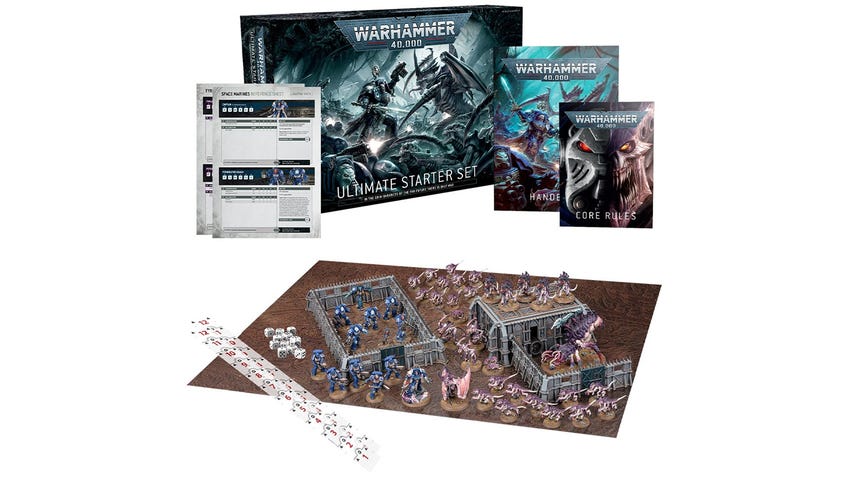
Best mid-range 40k starter set: Warhammer 40,000 Starter Set (£65)
The Warhammer 40,000 Starter Set drops the paints, brush and clippers, but includes more than twice the number of miniatures: 38 in total. Even if you’re not planning on painting the miniatures, you will need clippers to remove them from the sprue.
Much like the Introductory Set, you can play some stripped down games of 40k with this set, but you’ll need to spend more money for a proper game.
Best premium 40k starter set: Warhammer 40,000 Ultimate Starter Set (£125)
The Ultimate Starter Set is a big jump in price from the regular 40k Starter Set and only adds six more miniatures but, unlike the other sets, it also includes two card gaming boards (instead of a single paper mat) and several large pieces of plastic terrain.
Most importantly, the 44 included miniatures are the full Combat Patrols for the Space Marine and Tyranid factions, and they sell separately for £95 each. You also get the complete core rules in a small, softcover book, which is an extremely useful and convenient format.
If you’re certain you want to jump into 40k, the Ultimate Starter Set will give you a complete, standalone game in a box, as well as providing the foundations for two armies and the battlefield for them to fight across.



